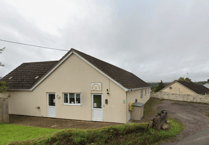THE sights will now be set on 2025 after Wellington secured ‘silver’ in the Portman Cup for South West in Bloom 2024.
South West in Bloom is part of Britain in Bloom, an initiative created by the Royal Horticultural Society to celebrate community gardening.
This year was the first time the town council led on the entry as this had been managed by
Somerset Council in the past.
Mayor Janet Lloyd and open spaces manager Darren Hill attended the South West in Bloom Awards Ceremony in Bath on Tuesday, October 8, where they were proud to accept ‘silver’ for Wellington.
A number of community groups have also been recognised for their contributions. Most notably, the Basins Volunteer Group and Friends of Wellington Park received an RHS level five ‘outstanding’ award for the It’s Your neighbourhood Award.
Transition Town Wellington and Swains Nature Reserve also received the level four ‘thriving award’
in the same category. The council will present these groups with their award certificates at the environment committee meeting on Wednesday, October 23.
Darren Hill said: “I would like to sincerely thank everyone involved in the lead up and those who attended on the judging day, this is a team effort and our wonderful Community Groups and Volunteers are so valuable to Wellington. My personal thanks to Wellington Town Council and the team, Somerset Council Grounds Team, Dave Burge, the Community Payback team, the Friends of Wellington Park, Basins Volunteer Group, Friends of Swains Nature Reserve, Transition Town Wellington, and Riverside Plant Nurseries - you all do a fantastic job.
“We are looking forward next year, when the town council has greater control and is able to implement improvement for the wider community to enjoy not just on judging day, but every day. Well done everyone!”
Cllr Lloyd said the council has gained some positive insight as to entries can be improved for 2025.
She said: “It’s a pity the judges completely missed the point of the living walls on the railings in the town centre. Although we want to make the planting attractive, the main reason for them being sited where they are is to alleviate the carbon monoxide emissions.”





Comments
This article has no comments yet. Be the first to leave a comment.